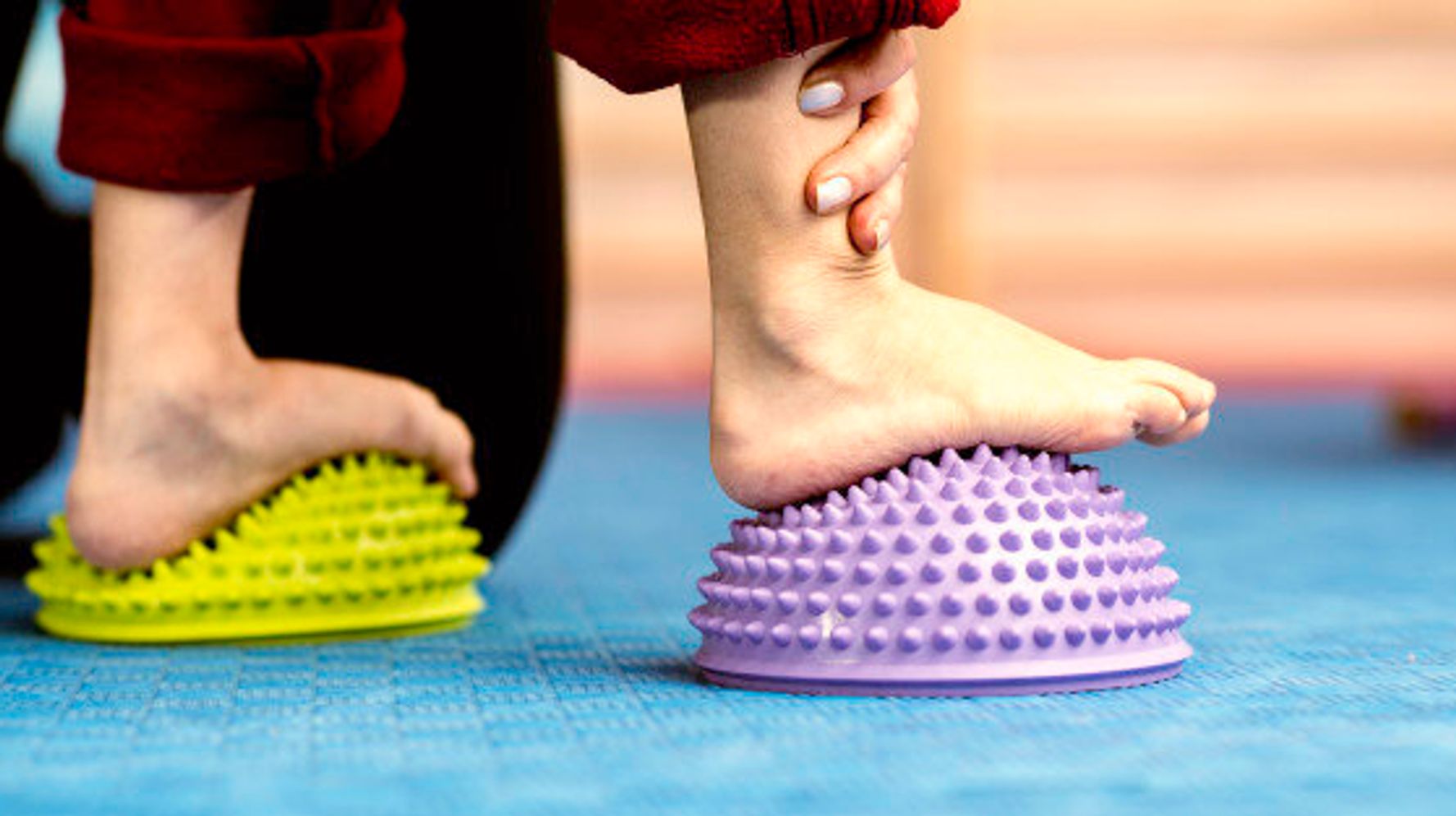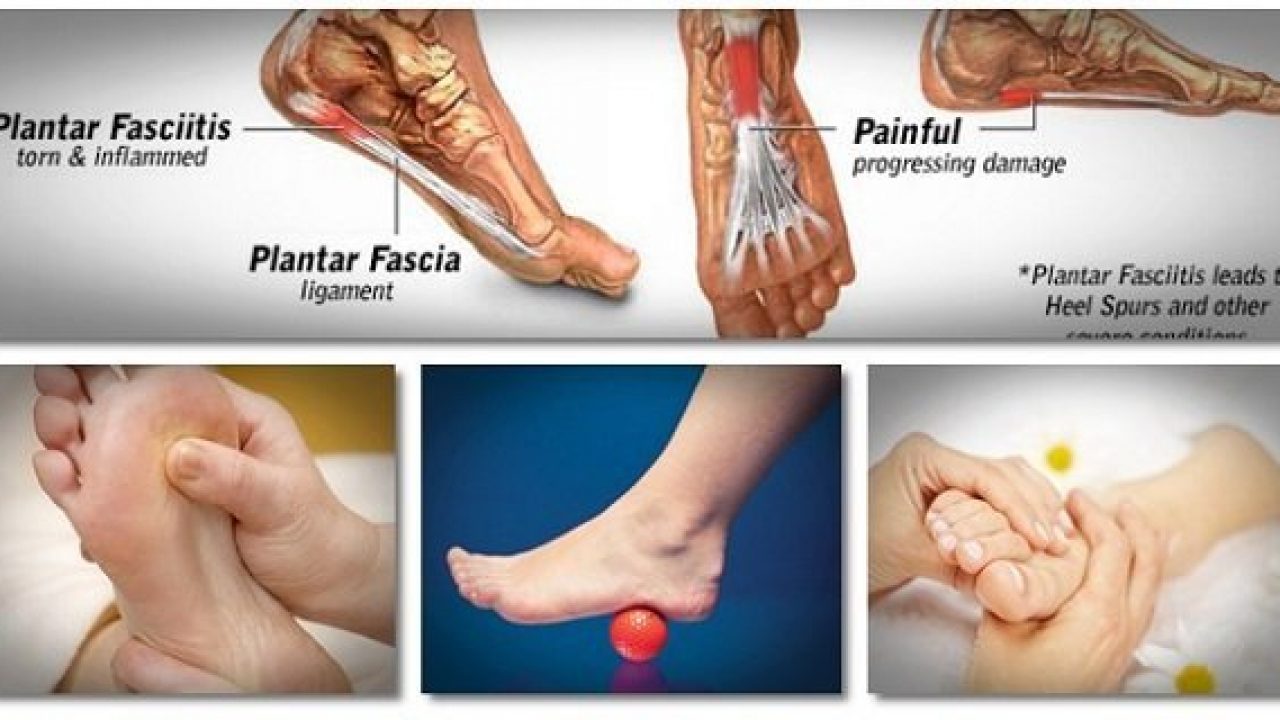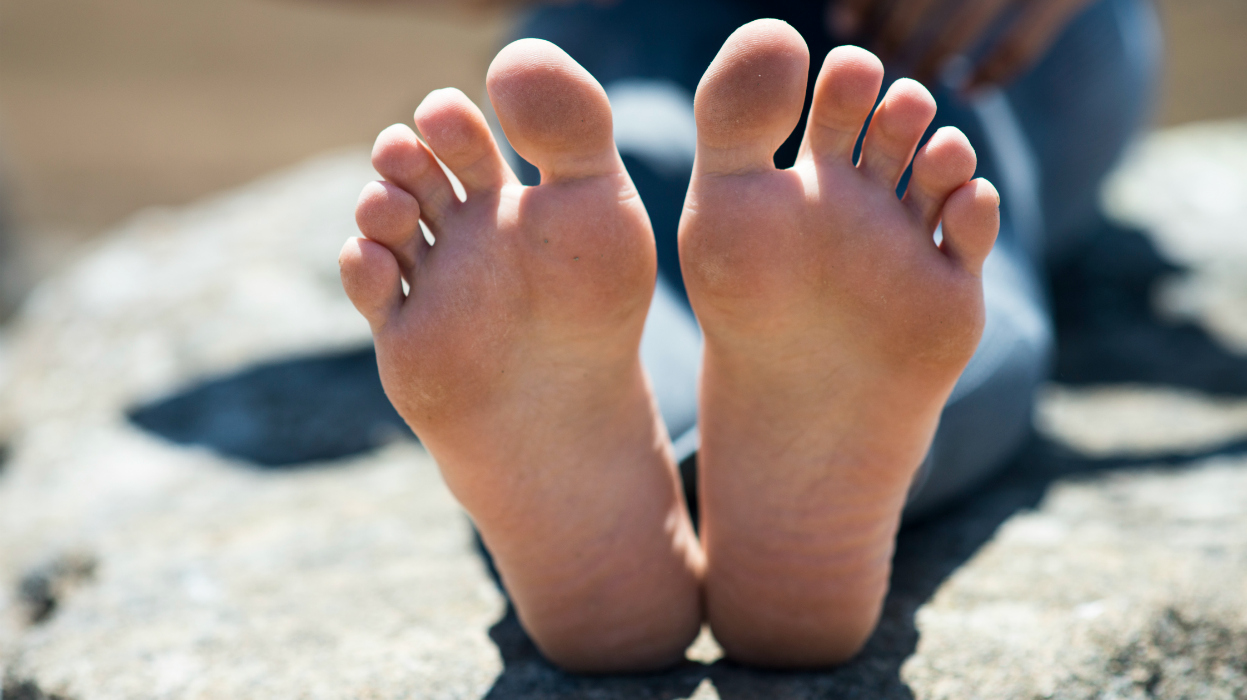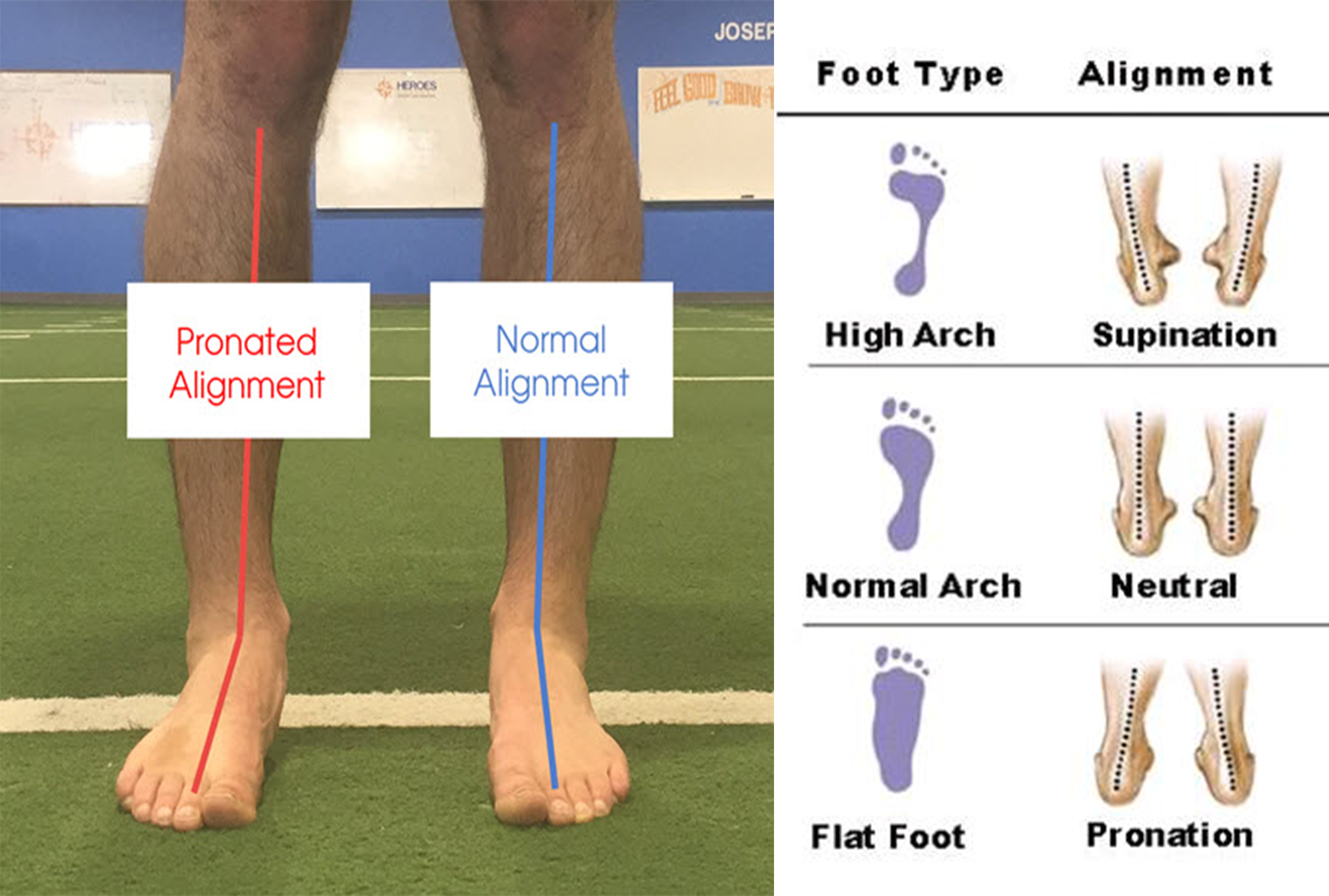A. What are the best foot exercises for healthy feet?
Many people suffer from pain in the feet or ankles at some point. By keeping the feet strong, a person can relieve pain and improve overall health and flexibility.
Regular exercise and stretching of the feet and ankles can help ensure that the muscles provide the best support. These exercises can also increase the range of movement in the feet to help a person stay active as long as possible.
Most foot exercises are simple and do not require complicated equipment. They can be done at home or in the gym as part of a regular exercise routine.
1. Flexibility and mobility exercises
The following exercises are designed to improve flexibility and mobility in the feet.
a. Elevation of the toe, tips and curves
This exercise consists of three steps and helps to strengthen all parts of the feet and toes.
Here is how to perform this exercise:
- Sitting on a chair with your feet on the floor.
- Keep your toes on the floor and raise your heels. Stop when only the balls of your feet are on the floor.
- Maintain this position for 5 seconds before lowering your heels again.
- For the second step, lift your heel and align your toes so that only the tips of your big toe and second toe touch the ground.
- Hold the position for 5 seconds before lowering.
- For the third step, lift the heel and roll your toes in so that only the tips of the toes touch the ground. Hold this position for 5 seconds.
- Build flexibility and range of motion by repeating each step 10 times.
b. Stretch the big toe
It is important to keep the big toe in a wide variety of movements. The next exercise also consists of three steps and is designed to stretch the toes that have been crushed into shoes and relieve the pain.
Here is how to perform this exercise:
- Sitting upright on a chair with your feet firmly on the ground.
- Rest your left foot on your right thigh.
- Using your fingers, gently extend the big toe up, down, and to the side.
- Stay in this position for 5 seconds.
- Repeat 10 times before moving to the other foot.
2. Strength Exercises
The following exercises can help improve the strength of your feet.
a. Feet
Toe cuts are designed to improve toe muscle control. It can be performed on both feet simultaneously or alternately depending on your comfort level.
See here how to perform this exercise:
- Sit on a chair with your back straight and your feet slightly rested on the floor.
- Spread your toes as far apart as possible, without stretching them. Maintain the position for 5 seconds.
- Repeat this movement 10 times.
- After you have built up some strength, try to wrap a rubber band around your toes. This will provide resistance and make the exercise more challenging.
b. Toe curls
The toe and toe snails work the flexor muscles of the fingers and toes and improve overall strength.
How to perform this exercise:
- Sitting on a chair with your feet on the floor.
- Place a small towel on the floor in front of you, with the short side towards your feet.
- Place the toes of one foot on the short side of the towel. Try to grab the towel between your toes and pull it towards you. Repeat the exercise five times before moving to the other foot.
- To make this exercise more challenging, weigh the opposite end of the towel with an object.
c. Picking up marbles
The marble pickup is designed to strengthen the muscles at the base of the feet and toes.
See here how to perform this exercise:
- Sitting on a chair with your feet on the ground.
- Place an empty bowl and a bowl of marbles (20 are good to start with) on the floor in front of your feet.
- Using only the toes of one foot, take each marble and place it in the empty bowl.
- Repeat the process with the other foot.
d. Walking on the sand
Running barefoot in the sand is a great way to stretch and strengthen the feet and calves. This is usually a good exercise because the smooth texture of the sand makes walking more physically challenging.
Here is how to do this exercise:
- Go to a beach, desert, or even a volleyball court.
- Take off your shoes and socks.
- Walk for as long as possible. Increase these distances slowly so as not to stretch the muscles of your feet and calves.
3. Exercises for pain
The following exercises can help ease the pain.
a. Toe extension
Toe extension is useful in preventing or treating plantar fasciitis – a condition that causes pain in the heel when walking, as well as difficulty in lifting the toes.
To perform this exercise:
- Sitting upright on a chair with your feet firmly on the ground.
- Place the left foot on the right thigh.
- Pull your toes up towards the ankle. A sensation of stretching should be felt on the sole of the foot and the heel cord.
- Hold the position for 10 seconds.
- Massage the arch of the foot during stretching to relieve tension and pain.
- Repeat this exercise 10 times on each foot.
b. Rolling golf ball
Rolling a golf ball under your feet can help alleviate discomfort in the arches of your feet and reduce the pain associated with plantar fasciitis.
To perform this exercise:
- Sit upright on a chair with your feet resting on the ground.
- Place a golf ball – or another small, hard ball – on the ground next to your feet.
- Place one foot on the ball and move it, pressing as hard as you can. The ball should massage the bottom of your foot.
- Do this exercise for 2 minutes and then repeat with the other foot.
- A bottle of frozen water can be a calming alternative if suitable balls are not available.
c. Stretching the Achilles tendon
The Achilles tendon is a ligament that connects the heel to the calf muscles. It can be easily overloaded, and keeping it strong can help with pain in the feet, ankles, or legs.
Here is how to perform this exercise:
- Stand facing a wall and raise your arms so your palms are flat against the wall.
- Place one foot behind, keeping the knee straight. Then bend the knee of the opposite leg.
- Keep both heels flat on the floor.
- Push the hips forward until you can feel the elongation in the Achilles tendon and calf muscles.
- Hold the position for 30 seconds before changing sides. Repeat the exercise three times on each side.
- For a slightly different stretch, bend the knee back and push the hip forward.
4. Tips to keep your feet healthy and safe
See here how to keep your feet strong and healthy:
- Perform an exhaustive warm up routine before exercising.
- Wear support shoes for daily activities and sports.
- Replace shoes when they wear out.
- Slowly build strength and flexibility to exercise your feet and ankles.
- Avoid uneven surfaces, especially when running. Try not to run up too often.
- Listen to your body and do not exaggerate in activities.
- Avoid the reoccurrence of injuries by resting and receiving adequate treatment.
It is always a good idea to keep your feet and ankles healthy. The exercises above can help relieve existing pain, prevent discomfort and reduce the risk of injuries.
B. 3 Essential Foot Exercises That Strengthen Your Feet for Running
“Feet are often ignored when we talk about strength training,” she says. “When we run, like long-distance runners, we end up with two to three times our body weight in one foot. Working with the strength of your feet can improve your natural elasticity and make you more agile. Strengthening the muscles that stabilize the feet can also help us to prevent our bows from leaning to the ground or our ankles from rolling out”.
In other words, strong feet are stable feet, and stable feet are less likely to have an unhealthy amount of pronation or supination. Stability and mobility in our feet also play an important role in optimizing performance, and a lack of stability that starts at the foot can travel up the leg.
“Proper foot strength and mobility to meet the demands of the race is important for efficient running,” adds Christopher Herbs, P.T., D.P.T., C.S.C.S.. “The lack of mobility – especially the lack of extension on the big toe or dorsiflexion on the ankle – can lead to compensation, especially on the knee or hip”.
At the most extreme end of the spectrum, neglecting the strength and mobility of the feet may play a role in causing more painful lesions. “Common problems that can occur in people with weak feet include inflammation, plantar fasciitis, bunions, neuromas, and even stress fractures to the feet or shins,” says Fitzgerald.
How to use this list: Do each of the movements listed below before and/or after each run or every day. The more often you do them, the stronger your feet will become! Each exercise is demonstrated by Fitzgerald himself so that you can learn the proper way. You only need a small ball, such as a lacrosse ball, a baseball, or you can use a trigger ball like the Acumobility Ball, which is flat on one side, making it easier to roll your foot without the ball rolling away.
1. Crouch down for dynamic dog stretching
How to do it: Kneel on the ground with your toes bent and lean on your heels. Swing from side to side on the curled toes to stretch the foot and stretch all aspects of the foot, calf muscles and tendons. Then move on all fours to a table position while keeping your toes coiled, and push your hips up and back to a doggy posture while pressing your heels to the floor. Hold the position for a second or two, then descend back to your hands and knees and start the sequence again. Repeat for 5 repetitions.
Why do it. “[This exercise is] a great activity to promote ankle dorsiflexion and extension of big toes, which is important for runners. We use this with some of our patients,” says Herbs.
This movement is beneficial because it not only stretches the arches of the foot, but also helps to stretch the calves’ muscles and tendons, Fitzgerald adds. “These muscles and tendons help move the foot and also play a role in how your foot hits the ground.
2. Release from the firing point to the feet
How to do it: use a ball or the Acumobility Ball and place the ball directly under the base of your toes. Move your weight to the ball. Flex your toes to grab the ball and then extend your toes through the entire range of motion. Repeat this 10 times.
Position the ball back under the ball of your foot. Move your weight to the ball of your foot. Rotate your foot around the ball of your foot, flexing your toes towards the ground and then stretching and extending your foot through the entire range of motion. Repeat this 10 times.
Finally, position the ball just in front of the heel at the base of the bow. Move your weight to the ball of your foot. Flex your foot while maintaining contact with the ball of your foot, then lower your heel and return your weight to the ball of your foot. Repeat the exercise 10 times.
Why do it? “Shooting point therapy with active relaxation has many benefits for a runner. Specifically on the feet, it can help promote circulation and allow the fascia around the muscle to align properly. You’ll have better movement on your toes and can stabilize with your feet,” explains Fitzgerald.
3. Lift your toes
How to do it: Spread your toes and toes on the floor. While keeping your toes two to five down, lift your big toe. Hold the position for two seconds, keeping the small toes relaxed. Repeat this 20 times. Then change and keep the big toe down and lift the toes two to five. Be careful not to pronounce the foot when lifting the small toes. Wait two seconds. Repeat this 20 times.
Why do it? Think of this exercise as biceps curls for your feet. This isolation exercise aims at and strengthens the stabilizing muscles of the foot – especially the muscles that hold and support the arch of the foot – by isolating the big toe and ensuring that it can move independently of the rest of the foot.
“It isolates the flexor and extensor muscles of the toes and forces them to work on their own. These small muscles play an important role in balance and stability. Strengthening them can also help prevent injuries such as shingles,” says Fitzgerald.
Although this exercise seems simple, it’s not. “This exercise takes some time to master and build strength, so be patient with it,” she says.
A tip from Kathleen Leninger, D.P.T., a physiotherapist at Custom Performance in New York City and a certified running coach: practice this exercise while showering, brushing your teeth, or doing some other careless household chores. The more you do it, the stronger those little muscles will become.
C. Exercises for healthy feet
Regular foot exercise not only improves overall foot health, but can also reduce the risk of injury. Walking is the best general foot exercise. When you walk, your foot goes through its entire range of motion, from heel tapping to lifting with your toes. Also, walking is one of the best forms of exercise for your whole body. It improves your cardiovascular health and can improve your circulation, muscle tone and mood.
1. In addition to walking, flexibility and endurance exercises can also help keep your feet healthy.
- Flexibility exercises. Exercises that improve flexibility will keep your feet flexible and can reduce your risk of injury. Don’t worry if your feet have become rigid with age; studies show that you can still improve your flexibility, regardless of your age. The easiest way to improve flexibility is through slow, gentle daily stretching exercises that focus on one muscle group at a time.
- Endurance exercises. Endurance exercises are exercises that work the muscles against some type of resistance, such as weights or exercise bands. Endurance exercises strengthen the muscles, which in turn better support and protect the foot as a whole. The exercise bands look a bit like compression bandages, but come in different colors that correspond to the level of resistance they provide.
The exercises of flexibility and resistance of the feet can be incorporated into your daily routine. Most can be done during the working day. Some can act sitting at your desk, others require you to stand up. To avoid slipping and falling, be barefoot and have a chair, desk or wall nearby that you can use to balance yourself. Do not do foot exercises if they hurt. Before doing any foot exercise, take some time to stretch and strengthen the muscles of your feet. Otherwise, your feet will suddenly bear the weight of all activity, especially in high impact sports like tennis or aerobics. And if you suffer from arthritis, diabetes, cardiovascular problems or structural foot problems that may affect your ability to play sport, consult a foot care specialist first.
2. Simple exercises to stretch and strengthen your feet
a. Unscrew – To loosen your foot before trying other exercises, try this
- Sit on a chair and place your feet firmly on the ground.
- Lift your left leg so that your foot is off the ground and turn your big toe in circles in the air clockwise direction 15 to 20 times.
- Reverse the direction and make another 15 to 20 circles, this time counterclockwise. 4.
- Repeat with the right foot.
b. Bottom of the foot – To stretch the muscles at the bottom of the foot
- Stand with your feet together.
- Back up with your left leg so that the heel is lifted and the toes are pressed to the ground. You should feel a slight pull of the muscles on the underside of your feet.
- Hold the position for 20 to 30 seconds.
- Repeat with your right foot.
c. Heel Exercises – To stretch the back of your heel:
- Wrap an exercise band around the leg of a heavy piece of furniture, such as a table or desk.
- Sit directly in front of you and slide your foot into the loop so that the exercise band wraps around your front foot, just below your toes.
- Pull your foot back with your forefoot and fold it around your ankle. Hold the position for a few seconds and then relax. You should feel a stretch on the back of your heel.
- Repeat this 10 to 15 times.
- Repeat the process with the other foot.











